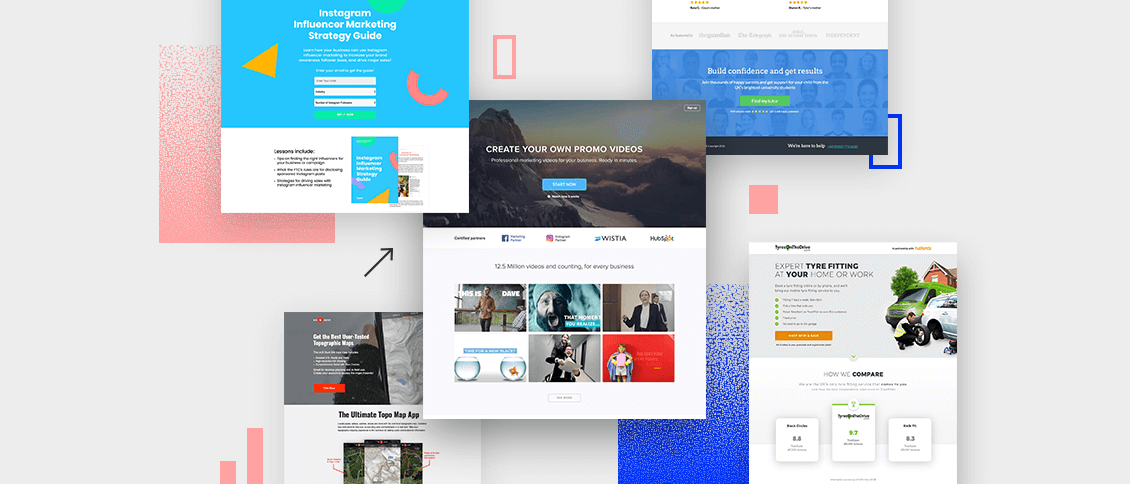
How to Get More Results Out of Your Customer Retention Strategies in AI Marketing
October 10, 2023
The Advanced Guide to Lead Magnet In B2B Lead Generation
October 11, 2023
Ignoring Audience Segmentation
In the world of B2B lead generation, one of the most common pitfalls is ignoring audience segmentation. Picture this: you’re at a crowded marketplace, trying to sell a variety of products to a diverse group of people. You have limited time and resources, so how do you decide which products to pitch to which customers? This is where audience segmentation comes into play.
The One-Size-Fits-None Approach
Many B2B companies make the mistake of adopting a one-size-fits-all approach in their advertising efforts. They cast a wide net, hoping to capture as many leads as possible. The problem with this strategy is that it often leads to generic and ineffective messaging. If your ads don’t resonate with your target audience, they’re likely to be ignored.
Tailoring Ads to Your Audience
Segmenting your audience means dividing them into smaller, more homogeneous groups based on characteristics like industry, company size, job roles, and pain points. By doing so, you can create tailored ad campaigns that speak directly to the unique needs and challenges of each group. For example, a software company might have different messaging for IT managers and CFOs, emphasizing different benefits of their product.
Crafting personalized ad content involves more than just using the recipient’s first name. It means addressing their pain points, showcasing how your solution can solve their specific problems, and highlighting case studies or testimonials from similar businesses.
The Power of Retargeting
Retargeting is a powerful tool in B2B lead generation. It allows you to re-engage with users who have already interacted with your website or previous ads. For example, if someone visited your pricing page but didn’t convert, you can show them ads highlighting the value of your solution or offering a limited-time discount.
Retargeting can significantly improve conversion rates, as it targets an audience that has already shown interest in your offering. It’s like giving a second chance to visitors who might have been on the verge of making a decision but got distracted.
Leveraging Account-Based Marketing (ABM)
Account-Based Marketing (ABM) is a targeted approach that focuses on specific high-value accounts rather than casting a wide net. In the B2B space, where deals often involve complex buying committees, ABM can be highly effective.
With ABM, you create customized campaigns for each key account, tailoring your messaging to their unique challenges and goals. This level of personalization can lead to deeper engagement and higher conversion rates.

Overlooking Quality Landing Pages
Landing pages are often the first point of contact between your potential leads and your business. Neglecting the quality of your landing pages can be a grave mistake in B2B lead generation.
The Landing Page as a First Impression
Imagine you’re hosting a high-stakes business meeting. You’d want to ensure that your meeting room is well-furnished, clean, and organized, right? Well, your landing page is your online meeting room. It’s where you make your first impression on potential leads.
A well-designed landing page not only looks professional but also conveys trust and reliability. It should have a clear headline, concise copy, a compelling call to action, and a form for lead capture. Visitors should know what to expect and how to take the next step within seconds of landing on the page.
The Impact of Load Times
In today’s fast-paced digital world, nobody likes to wait. Slow-loading pages can be a major turn-off for visitors. Studies show that even a one-second delay in page load time can result in a significant drop in conversions.
To improve load times, you can optimize images, leverage browser caching, use content delivery networks (CDNs), and minimize the use of bulky scripts or plugins. Ensuring a seamless and speedy experience for your visitors can significantly boost your conversion rates.
Mobile Responsiveness
Mobile responsiveness is no longer a nice-to-have; it’s a must-have. With the increasing use of smartphones and tablets, a significant portion of your audience will access your landing pages on mobile devices.
Google also gives preference to mobile-friendly pages in its search results, so having a mobile-responsive design can improve your visibility. Ensure that your landing pages adapt smoothly to different screen sizes and maintain the same level of functionality and readability.
Harnessing the Power of Trust Signals
Trust is a critical factor in B2B transactions. Potential leads need to trust your business and believe that you can deliver on your promises. Trust signals on your landing pages can help establish this credibility.
Trust signals can include customer testimonials, industry certifications, security badges, and case studies that highlight your successes. When visitors see that other businesses have had positive experiences with your products or services, they’re more likely to trust you and consider converting.
In conclusion, overlooking the quality of your landing pages can cost you valuable leads. A well-designed, fast-loading, mobile-responsive landing page with trust signals can significantly improve your B2B lead generation efforts.

Neglecting Ad Copy and Creatives
In the fast-paced world of B2B advertising, your ad copy and creatives play a pivotal role in capturing your audience’s attention and driving conversions.
Crafting Compelling Ad Copy
Ad copy is the heart of your advertising message. It’s the persuasive language that compels your audience to take action. Crafting compelling ad copy is both an art and a science.
Firstly, it’s essential to understand your audience and their pain points. What challenges are they facing, and how can your product or service address those challenges? Your ad copy should directly speak to these pain points and offer a solution.
Secondly, storytelling is a powerful tool in B2B advertising. Rather than bombarding your audience with technical details, tell them a story about how your solution helped a business overcome a specific problem. Stories resonate with people on a deeper level and make your message more memorable.
Lastly, it’s crucial to follow some fundamental dos and don’ts of ad copywriting. Use clear and concise language, avoid jargon, and focus on the benefits rather than just the features of your offering.
Visual Appeal Matters
In the world of digital advertising, visuals are paramount. Humans are inherently visual creatures, and compelling visuals can make your ads stand out from the crowd.
Your ad creatives should be visually appealing and relevant to your message. High-quality images, well-designed graphics, and even short videos can capture attention and convey information more effectively than text alone.
The psychology of visual elements in ads is a fascinating field. Colors, for example, can evoke emotions and influence decision-making. A well-chosen color scheme can make your ads more persuasive.
Consistency Across Campaigns
Consistency is the key to building a strong and recognizable brand. When your audience sees consistent messaging across all your ad campaigns, it reinforces your brand’s identity and trustworthiness.
Maintaining brand consistency means that your ad messaging should align with your overall brand voice and values. Whether a customer encounters your ad on social media, a search engine, or a website, they should have a consistent experience.
Consistency also extends to the design and imagery used in your ads. Using the same logo, fonts, and color schemes across all campaigns reinforces your brand’s visual identity.
Split Testing for Perfection
No matter how experienced you are in advertising, it’s impossible to predict with absolute certainty what will resonate with your audience. This is where A/B testing, or split testing, comes into play.
A/B testing involves creating two or more variations of an ad and showing them to different segments of your audience. You then analyze which version performs better in terms of click-through rates, conversion rates, or other relevant metrics.
A/B testing allows you to continuously improve your ad campaigns. By testing different headlines, ad copy, visuals, and call-to-action buttons, you can optimize your campaigns for maximum effectiveness.
In summary, neglecting ad copy and creatives in your B2B advertising efforts can lead to missed opportunities. Crafting compelling ad copy, using visually appealing creatives, maintaining consistency, and conducting A/B testing can help you create more persuasive and successful ad campaigns.

Mismanaging Budget and Bidding
Effective budget management and bidding strategy are crucial in paid advertising for B2B lead generation. Missteps in these areas can lead to inefficient spending and poor results.
Setting Unrealistic Budget Expectations
One common mistake in B2B lead generation is setting unrealistic budget expectations. Some businesses may allocate too little budget and expect substantial results, while others may overspend unnecessarily.
Budget decisions should be based on your specific goals, industry benchmarks, and the competitiveness of your niche. It’s essential to strike a balance between investing enough to generate quality leads and avoiding wasteful spending.
Factors influencing budget decisions include the size of your target audience, the cost per click (CPC) for your chosen keywords, and the expected conversion rate. Conducting thorough research and periodically reassessing your budget can help you make informed decisions.
The Bid Strategy Conundrum
Choosing the right bidding strategy is a critical decision in paid advertising. Bidding strategies determine how you pay for ad placements and can significantly impact your campaign’s performance.
Different bidding strategies cater to various goals. For example, manual bidding gives you full control over your bids but requires continuous monitoring and adjustment. Automated bidding, on the other hand, relies on machine learning algorithms to optimize bids based on your goals.
Target Return on Ad Spend (ROAS) bidding is particularly useful in B2B lead generation, as it allows you to set a specific ROAS target. This strategy focuses on maximizing the return on your advertising spend rather than simply maximizing clicks or impressions.
Monitoring and Adjusting
The digital advertising landscape is dynamic, and what works today may not work tomorrow. That’s why real-time monitoring and adjustment are crucial.
Key performance indicators (KPIs) play a central role in monitoring your campaign’s effectiveness. Common KPIs in B2B lead generation include click-through rate (CTR), conversion rate, cost per conversion, and return on ad spend (ROAS).
Continuous monitoring allows you to identify underperforming keywords, ads, or audience segments. By making data-driven adjustments, such as pausing low-performing ads or increasing bids for high-converting keywords, you can optimize your campaigns for better results.
The Value of Professional Management
Managing B2B ad campaigns can be complex, and businesses often struggle to allocate the necessary time and expertise. This is where professional management comes into play.
You have two primary options for managing your B2B ad campaigns: in-house management or outsourcing to an agency. Each has its pros and cons.
In-house management gives you full control over your campaigns, but it also requires hiring and training skilled staff. On the other hand, outsourcing to a specialized agency provides access to expertise and experience, potentially leading to better results.
When considering professional management, it’s crucial to assess your business’s needs, budget, and long-term goals. Many successful B2B companies have benefited from outsourcing their advertising efforts to experts who can navigate the intricacies of paid advertising effectively.
In summary, mismanaging budget and bidding can lead to inefficient spending and missed opportunities in B2B lead generation. Setting realistic budget expectations, choosing the right bidding strategy, continuous monitoring, and considering professional management are essential steps to optimize your advertising efforts.
![]()
Underestimating the Power of Analytics
In the digital age, data is king, and analytics play a vital role in B2B lead generation through paid advertising.
Implementing Tracking Mechanisms
Tracking mechanisms are the foundation of analytics in paid advertising. They allow you to gather data on user interactions with your ads and landing pages. Without proper tracking, it’s challenging to measure the effectiveness of your campaigns.
One essential tracking mechanism is conversion tracking. It enables you to monitor specific actions that users take on your website, such as filling out a contact form or making a purchase. Implementing conversion tracking is crucial for understanding which ads and keywords lead to valuable leads.
UTM parameters are another valuable tool. They allow you to add tags to your URLs, providing detailed information about the source of traffic. UTM parameters help you determine which advertising channels are driving the most conversions.
Data Interpretation for Improvement
Collecting data is just the first step; the real value lies in interpreting that data to make informed decisions. Analyzing analytics data can provide insights into user behavior, campaign performance, and areas for improvement.
Identifying trends and opportunities is a key aspect of data interpretation. For example, you may discover that certain keywords consistently lead to higher conversion rates. Armed with this information, you can allocate more budget and effort to those keywords.
Creating actionable insights from your data involves translating findings into concrete changes in your advertising strategy. It might mean optimizing underperforming ads, adjusting bidding strategies, or refining audience targeting.
Attribution Modeling in B2B
Attribution modeling is a critical concept in B2B lead generation. It refers to the process of assigning credit to different touchpoints in a customer’s journey before conversion.
In B2B scenarios, the decision-making process is often complex and involves multiple interactions with your brand. Attribution modeling helps you understand which touchpoints played a significant role in the lead’s journey.
Common attribution models include first-touch (giving credit to the initial interaction), last-touch (crediting the final interaction), and multi-touch (assigning credit to various touchpoints along the journey). Choosing the right attribution model depends on your business model and objectives.
AI and Predictive Analytics
The advent of artificial intelligence (AI) has revolutionized analytics in B2B lead generation. AI-powered tools can analyze vast datasets, identify patterns, and make predictions with remarkable accuracy.
AI enhances B2B lead generation campaigns in several ways. It can help you identify the most promising leads by scoring them based on their likelihood to convert. Predictive analytics can also forecast future trends and provide recommendations for optimizing your ad spend.
Real-world applications of AI in B2B advertising include predictive lead scoring, dynamic content personalization, and automated bidding strategies. By harnessing the power of AI, businesses can gain a competitive edge in the world of paid advertising.
In conclusion, underestimating the power of analytics can hinder your B2B lead generation efforts. Implementing tracking mechanisms, interpreting data for improvement, understanding attribution models, and embracing AI-driven analytics can help you make data-driven decisions that lead to better results.

Neglecting SEO and Content Marketing
While paid advertising is a valuable strategy for B2B lead generation, neglecting SEO (Search Engine Optimization) and content marketing can limit your long-term success.
The Synergy of Paid Advertising and SEO
Paid advertising and SEO are not mutually exclusive; in fact, they can work together synergistically to enhance your B2B lead generation efforts.
Paid ads can provide immediate visibility and traffic to your website, especially for competitive keywords. However, they require ongoing investment. SEO, on the other hand, focuses on optimizing your website to rank organically in search engine results, providing long-term benefits.
By integrating paid advertising and SEO, you can ensure a consistent online presence. For example, you can run paid ads for high-competition keywords while also targeting long-tail keywords through SEO efforts.
Content’s Role in Lead Generation
Content is the backbone of both SEO and content marketing. In B2B lead generation, content serves as a valuable lead magnet. High-quality content attracts potential leads and encourages them to engage with your brand.
Creating valuable content assets, such as informative blog posts, whitepapers, eBooks, and webinars, can position your business as an industry authority. These assets not only attract leads but also nurture them throughout their decision-making process.
Leveraging Long-Tail Keywords
Long-tail keywords are specific, often longer, and less competitive search terms. They may have lower search volume, but they tend to convert at a higher rate. Neglecting long-tail keywords is a common oversight in B2B lead generation.
Understanding long-tail keywords requires insight into your audience’s pain points and search behavior. Long-tail keywords are often used by prospects in the later stages of their buying journey when they are actively seeking solutions.
Targeting long-tail keywords in your content and paid advertising can help you capture leads at the moment when they are most likely to convert. These keywords align with specific pain points, indicating a higher level of purchase intent.
Maximizing Organic Traffic
Organic traffic generated through SEO efforts is highly valuable. It’s free, sustainable, and tends to convert well. Neglecting SEO means missing out on a significant source of potential leads.
To maximize organic traffic, you should focus on creating high-quality, informative, and engaging content. This content should address your audience’s needs and pain points, positioning your brand as a go-to resource in your industry.
SEO-driven lead generation isn’t just about ranking high in search results; it’s also about providing value to your audience. When you consistently publish valuable content that addresses your target audience’s questions and challenges, you’ll naturally attract leads who see your business as a trusted authority.
In conclusion, neglecting SEO and content marketing can limit the long-term success of your B2B lead generation efforts. By understanding the synergy between paid advertising and SEO, recognizing the importance of content, targeting long-tail keywords, and maximizing organic traffic, you can create a holistic strategy that generates leads and builds brand authority.

Fostering Collaboration Between Sales and Marketing
In B2B lead generation, the collaboration between sales and marketing teams is often overlooked but crucial for success.
Aligning Goals and Metrics
One of the most common challenges in B2B lead generation is the misalignment of goals and metrics between sales and marketing teams. Sales teams may focus on closing deals, while marketing teams may prioritize lead generation and brand awareness.
Aligning goals and metrics means establishing shared key performance indicators (KPIs) that both teams work towards. For example, both teams could be measured on the number of qualified leads generated or the conversion rate from leads to customers.
This alignment ensures that both teams are working towards the same objectives and fosters a sense of shared responsibility for revenue generation.
Effective Lead Handoff
A seamless lead handoff process is critical in B2B lead generation. When a marketing-qualified lead (MQL) is ready to engage with sales, it’s essential to ensure a smooth transition.
Automating lead handoff processes can streamline this transition. For example, when an MQL reaches a certain score or takes specific actions on your website, an automated system can notify the sales team and provide them with the lead’s information.
A well-executed lead handoff ensures that leads don’t fall through the cracks and that they receive a consistent and personalized experience from marketing to sales.
Continuous Feedback Loop
Effective collaboration between sales and marketing requires open communication and a continuous feedback loop. Regular meetings and discussions allow both teams to share insights, challenges, and feedback.
Sales teams can provide valuable information about the quality of leads generated by marketing efforts. They can offer insights into the pain points and objections that leads commonly express during the sales process.
Marketing teams can use this feedback to refine their lead generation strategies and create content that addresses the specific needs of potential leads.
Celebrating Wins Together
Finally, fostering collaboration between sales and marketing involves celebrating wins together. When a lead generated by marketing converts into a customer through the sales process, it’s a shared success.
Recognizing these joint successes builds a culture of collaboration and encourages both teams to work together toward common goals. Whether it’s a shared celebration, bonuses, or other incentives, acknowledging these achievements reinforces the importance of collaboration.
In conclusion, neglecting the collaboration between sales and marketing can hinder your B2B lead generation efforts. Aligning goals and metrics, ensuring effective lead handoff, maintaining a continuous feedback loop, and celebrating wins together are essential steps to foster collaboration and drive revenue growth.
Conclusion
In this comprehensive guide, we’ve explored the common pitfalls that businesses face in B2B lead generation through paid advertising. From ignoring audience segmentation to neglecting the collaboration between sales and marketing, these pitfalls can impede your success.
However, armed with the knowledge of these challenges and the strategies to overcome them, you can navigate the complex landscape of B2B lead generation more effectively. By embracing audience segmentation, optimizing landing pages, crafting compelling ad copy, managing budgets wisely, harnessing analytics, and integrating SEO and content marketing, you can elevate your lead generation efforts to new heights.
Remember that B2B lead generation is an ongoing process that requires continuous improvement and adaptation. By avoiding these common pitfalls and implementing best practices, you can set your business on the path to sustainable growth and success in the world of paid advertising.
Now, it’s time to apply these insights and take your B2B lead generation to the next level. Don’t let these pitfalls hold you back; instead, use them as stepping stones to greater achievements.


